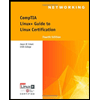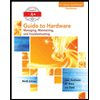
PROGRAMMABLE LOGIC CONTROL.(LL)>CUSTOM<
5th Edition
ISBN: 9781266481475
Author: Petruzella
Publisher: MCG
expand_more
expand_more
format_list_bulleted
Question
Chapter 14, Problem 15RQ
Program Plan Intro
PID Control:
- The Proportional Integral Derivative (PID) control refers to a feedback control method.
- It performs the combined actions of proportional, integral, and derivative controls.
- It is one of the most widely used process controller.
- The PID control is used to maintain a process variable within the limits of a specified set point. These process variables can be temperature, flow, level, or speed.
- It also allows the control process operations to take place outside the Central Processing Unit (CPU), which in fact, greatly reduces the additional burden of CPU.
Tuning:
- The appropriate values of gain, rate, and reset time parameters should be determined by tuning to achieve the required control of a PID controller.
- The controller’s output will be changed by tuning parameters due to the deviation in the process variable from the set point, and thus, the value of process variable is also changed.
- Generally, three methods are used in PID controller tuning as follows:
- Manual tuning
- Auto tune
- Intelligent tuning.
Expert Solution & Answer
Want to see the full answer?
Check out a sample textbook solution
Students have asked these similar questions
You will write a program that allows the user to keep track of college locations and details about each location. To begin you will create a College python class that keeps track of the csollege's unique id number, name, address, phone number, maximum students, and average tuition cost.
Once you have built the College class, you will write a program that stores College objects in a dictionary while using the College's unique id number as the key.
The program should display a menu in this order that lets the user:
1) Add a new College
2) Look up a College
4) Delete an existing College
5) Change an existing College's name, address, phone number, maximum guests, and average tuition cost.
6) Exit the program
Show all the work
Construct a frequency polygon density estimate for the sample in Question 1, using bin width determined by Sturges’ Rule.
Chapter 14 Solutions
PROGRAMMABLE LOGIC CONTROL.(LL)>CUSTOM<
Ch. 14 - Compare continuous and batch processes.Ch. 14 - Prob. 2RQCh. 14 - State the basic function of each of the following...Ch. 14 - State the purpose of each of the following types...Ch. 14 - Prob. 5RQCh. 14 - Prob. 6RQCh. 14 - Prob. 7RQCh. 14 - Prob. 8RQCh. 14 - Prob. 9RQCh. 14 - Prob. 10RQ
Ch. 14 - Prob. 11RQCh. 14 - What term of a PID control is designed to...Ch. 14 - Prob. 13RQCh. 14 - Prob. 14RQCh. 14 - Prob. 15RQCh. 14 - Prob. 16RQCh. 14 - Prob. 17RQCh. 14 - Prob. 18RQCh. 14 - Prob. 19RQCh. 14 - List four types of communication tasks provided by...Ch. 14 - Prob. 21RQCh. 14 - What are the three general levels of functionality...Ch. 14 - Prob. 23RQCh. 14 - Prob. 24RQCh. 14 - Compare device and process bus networks.Ch. 14 - Prob. 26RQCh. 14 - Prob. 27RQCh. 14 - Prob. 28RQCh. 14 - Prob. 29RQCh. 14 - Summarize the collision detection network access...Ch. 14 - Prob. 31RQCh. 14 - Prob. 32RQCh. 14 - Prob. 33RQCh. 14 - Prob. 34RQCh. 14 - Prob. 35RQCh. 14 - Prob. 36RQCh. 14 - Prob. 37RQCh. 14 - Prob. 38RQCh. 14 - Prob. 39RQCh. 14 - Explain how redundant media works.Ch. 14 - Prob. 41RQCh. 14 - Prob. 42RQCh. 14 - Prob. 43RQCh. 14 - Prob. 44RQCh. 14 - Summarize the two main functions of a SCADA...Ch. 14 - Prob. 46RQCh. 14 - Prob. 1PCh. 14 - Prob. 2PCh. 14 - How would an on/off controller respond if the...Ch. 14 - In a home heating system with on/off control, what...Ch. 14 - a. Calculate the proportional band of a...Ch. 14 - Prob. 6PCh. 14 - Prob. 7PCh. 14 - Prob. 8P
Knowledge Booster
Similar questions
- [5 marks] Give a recursive definition for the language anb2n where n = 1, 2, 3, ... over the alphabet Ó={a, b}. 2) [12 marks] Consider the following languages over the alphabet ={a ,b}, (i) The language of all words that begin and end an a (ii) The language where every a in a word is immediately followed by at least one b. (a) Express each as a Regular Expression (b) Draw an FA for each language (c) For Language (i), draw a TG using at most 3 states (d) For Language (ii), construct a CFG.arrow_forwardQuestion 1 Generate a random sample of standard lognormal data (rlnorm()) for sample size n = 100. Construct histogram estimates of density for this sample using Sturges’ Rule, Scott’s Normal Reference Rule, and the FD Rule. Question 2 Construct a frequency polygon density estimate for the sample in Question 1, using bin width determined by Sturges’ Rule.arrow_forwardGenerate a random sample of standard lognormal data (rlnorm()) for sample size n = 100. Construct histogram estimates of density for this sample using Sturges’ Rule, Scott’s Normal Reference Rule, and the FD Rule.arrow_forward
- Can I get help with this case please, thank youarrow_forwardI need help to solve the following, thank youarrow_forwardreminder it an exercice not a grading work GETTING STARTED Open the file SC_EX19_EOM2-1_FirstLastNamexlsx, available for download from the SAM website. Save the file as SC_EX19_EOM2-1_FirstLastNamexlsx by changing the “1” to a “2”. If you do not see the .xlsx file extension in the Save As dialog box, do not type it. The program will add the file extension for you automatically. With the file SC_EX19_EOM2-1_FirstLastNamexlsx still open, ensure that your first and last name is displayed in cell B6 of the Documentation sheet. If cell B6 does not display your name, delete the file and download a new copy from the SAM website. Brad Kauffman is the senior director of projects for Rivera Engineering in Miami, Florida. The company performs engineering projects for public utilities and energy companies. Brad has started to create an Excel workbook to track estimated and actual hours and billing amounts for each project. He asks you to format the workbook to make the…arrow_forward
arrow_back_ios
SEE MORE QUESTIONS
arrow_forward_ios
Recommended textbooks for you
 Systems ArchitectureComputer ScienceISBN:9781305080195Author:Stephen D. BurdPublisher:Cengage Learning
Systems ArchitectureComputer ScienceISBN:9781305080195Author:Stephen D. BurdPublisher:Cengage Learning CompTIA Linux+ Guide to Linux Certification (Mind...Computer ScienceISBN:9781305107168Author:Jason EckertPublisher:Cengage Learning
CompTIA Linux+ Guide to Linux Certification (Mind...Computer ScienceISBN:9781305107168Author:Jason EckertPublisher:Cengage Learning A+ Guide To It Technical SupportComputer ScienceISBN:9780357108291Author:ANDREWS, Jean.Publisher:Cengage,
A+ Guide To It Technical SupportComputer ScienceISBN:9780357108291Author:ANDREWS, Jean.Publisher:Cengage, Enhanced Discovering Computers 2017 (Shelly Cashm...Computer ScienceISBN:9781305657458Author:Misty E. Vermaat, Susan L. Sebok, Steven M. Freund, Mark Frydenberg, Jennifer T. CampbellPublisher:Cengage Learning
Enhanced Discovering Computers 2017 (Shelly Cashm...Computer ScienceISBN:9781305657458Author:Misty E. Vermaat, Susan L. Sebok, Steven M. Freund, Mark Frydenberg, Jennifer T. CampbellPublisher:Cengage Learning A+ Guide to Hardware (Standalone Book) (MindTap C...Computer ScienceISBN:9781305266452Author:Jean AndrewsPublisher:Cengage Learning
A+ Guide to Hardware (Standalone Book) (MindTap C...Computer ScienceISBN:9781305266452Author:Jean AndrewsPublisher:Cengage Learning Principles of Information Systems (MindTap Course...Computer ScienceISBN:9781305971776Author:Ralph Stair, George ReynoldsPublisher:Cengage Learning
Principles of Information Systems (MindTap Course...Computer ScienceISBN:9781305971776Author:Ralph Stair, George ReynoldsPublisher:Cengage Learning

Systems Architecture
Computer Science
ISBN:9781305080195
Author:Stephen D. Burd
Publisher:Cengage Learning

CompTIA Linux+ Guide to Linux Certification (Mind...
Computer Science
ISBN:9781305107168
Author:Jason Eckert
Publisher:Cengage Learning

A+ Guide To It Technical Support
Computer Science
ISBN:9780357108291
Author:ANDREWS, Jean.
Publisher:Cengage,

Enhanced Discovering Computers 2017 (Shelly Cashm...
Computer Science
ISBN:9781305657458
Author:Misty E. Vermaat, Susan L. Sebok, Steven M. Freund, Mark Frydenberg, Jennifer T. Campbell
Publisher:Cengage Learning

A+ Guide to Hardware (Standalone Book) (MindTap C...
Computer Science
ISBN:9781305266452
Author:Jean Andrews
Publisher:Cengage Learning

Principles of Information Systems (MindTap Course...
Computer Science
ISBN:9781305971776
Author:Ralph Stair, George Reynolds
Publisher:Cengage Learning